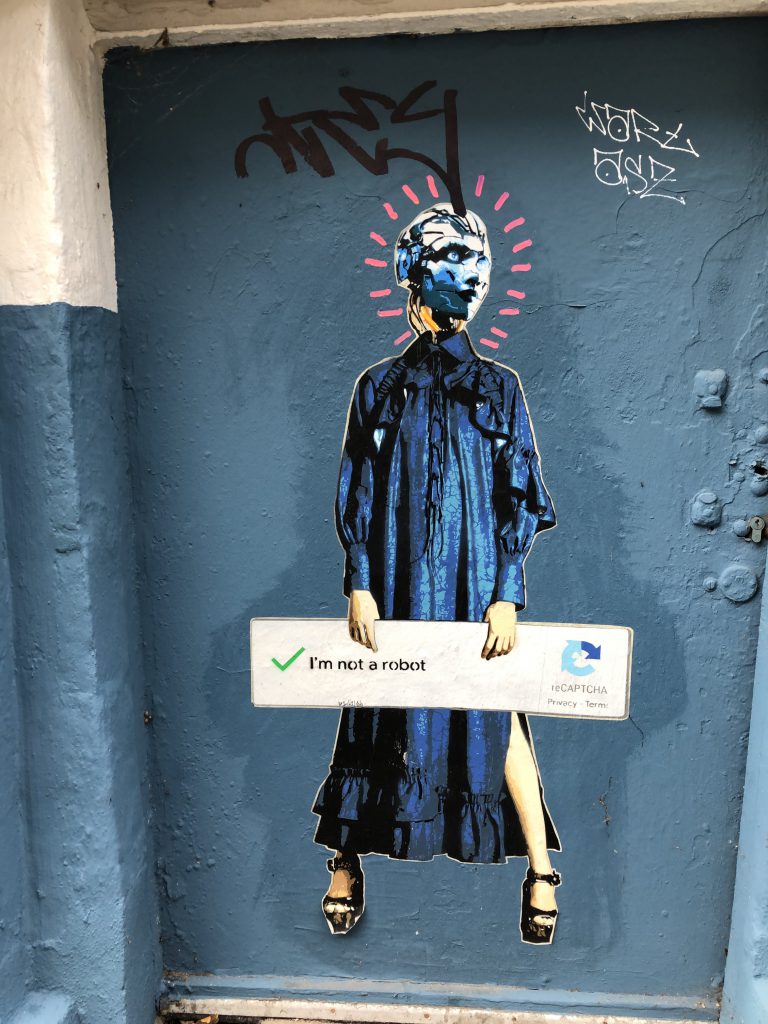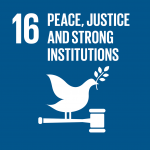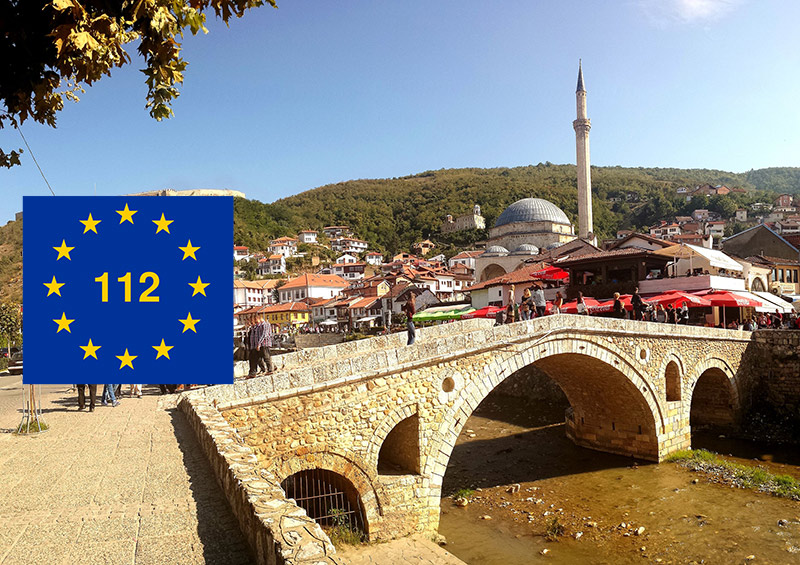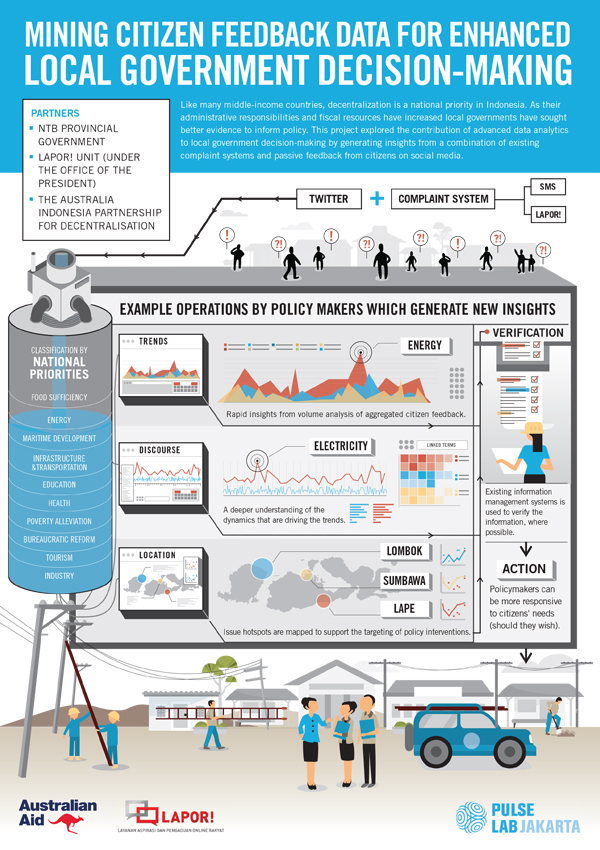Part 3 of my learning curve about Big Data for dummys (like myself)
This post in the series Big Data for Dummys (like myself) explores how big data can help innovation in development. It demonstrates some hands on examples of Big Data for Development, which I found on the UN Global Pulse website.
Big Data holds the promise of innovation in development. Big Data for Development can be used to turn imperfect, complex, often unstructured data into actionable information. Sources as call logs, mobile-banking transactions, online user-generated content such as blog posts and Tweets, online searches, satellite images, etc. generate data to be used for development.
Data for Development relates to, but differs from, both ‘traditional development data’ (e.g. survey data, official statistics), and what the private sector and mainstream media call ‘Big Data’ in a number of ways. The United Nations initiative, Global Pulse, has developed a loose taxonomy of types of new, digital data sources that are relevant to global development which you can find here
Big Data allows to track development progress, improve social protection, and understand where existing policies and programmes require adjustment. In correlation with Social Media it also allows citizen participation as the examples below show.

Computational tools, such as machine learning and AI, which have developed in other fields, have the ability to reveal trends and correlations within and across large data sets that would otherwise remain undiscovered. Foremost, Big Data for Development requires human expertise and perspectives and that, as with any algorithms developed by humans, raises questions about data justice—including concerns over the relevance of the data in developing country contexts, issues of ethics, inclusiveness, reliability and privacy issues of utilising personal data. I will explore data justice in my next blog.
Below are three Case Studies, which provide an insight into the opportunities of using Big Data for Development (adapted from Global Pulse)
Case Study 1
Timeline management for wide recognition
SDG 16

Promote peaceful and inclusive societies for sustainable development, provide access to justice for all and build effective, accountable and inclusive institutions at all levels
SDG 16, is one of the most difficult to measure. Most countries do not have a baseline for the goals, as factors like corruption just don’t have strong indicator precedents. Tunisia is part of a group of pilot countries working to find ways to track and evaluate progress on SDG 16. Within this pioneering work, the Tunisia National Statistics Institute and the UNDP Tunisia office saw an opportunity for data innovation. Having completed the first household survey on governance and democracy, the team explored complementary data sources.
Social media presented an exciting opportunity. While “corruption” may not be specifically quantifiable, public sentiment can be one indicator—and people are vocal on social media about their perceptions of corruption. The team researched whether public sentiment could be effectively measured by analyzing keywords in Twitter messages. By pulling tweets from the same time frame in which they had conducted the household survey, they were able to reach a clear correlation between the two data sources, indicating the value in further investigation.
The use of complementary data sources
The household survey offers a static snapshot of a particular time and place; the team is continuing to investigate whether social media can be regarded as a “heart-rate monitor,” providing a real-time diagnosis of ongoing changes and variability.
While work continues, this early result from the proof-of-concept has allowed the team to communicate about the project for the benefit of a global field. Because of the initiative, Tunisia has been widely recognized as a pioneer in using big data for SDG measurement, and was invited to be part of a working group on big data and statistics within the UN. This project has led the National Statistical Institute of Tunisia to foresee the establishment of a big data team.
http://europeandcis.undp.org/blog/2015/11/25/diagnose-and-treat-measuring-a-countrys-pulse-with-social-media/
CASE STUDY 2
Mapping 112 calls to plan emergency response in Kosovo

Allocating resources to emergency services is a challenge for cities around the world (since fires, traffic accidents, and other security and health issues don’t follow a set schedule). Many are beginning to use the data recorded during emergency calls (in this case 112) to better predict service positions and schedules.
In Kosovo, a team of data innovators worked together to not only create a predictive model, but to do it with direct input from communities.* Team members included the UNDP Kosovo office, Open Data Kosovo, and the Kosovo Emergency Management Agency (EMA). The team used data from 112 calls to find patterns in type and timing of emergency calls over the course of a 22-month period in one city; to address data gaps about specific locations of emergencies, they have created a crowdsourcing tool for people to report geographic information as well as access information about emergencies in their areas.
*This approach is “best practice” in data innovation; when both communities and governments comanage and have full access to data insights, it can exponentially increase resilience.
http://europeandcis.undp.org/blog/2016/04/20/can-big-data-help-us-make-emergency-services-better/
UN Global Pulse works with partners to deliver data-driven solutions to development, humanitarian, peace and human rights challenges. Some are digital products to empower our United Nations (UN) colleagues with actionable insight drawn from big data – such as PulseSatellite, which extracts information from satellite imagery for humanitarian use, and Operational Response Communication Analysis (ORCA), which integrates radio data analysis into infodemic monitoring.
CASE STUDY 3
Mining Citizen Feedback Data in Indonesia for enhanced local government decision making

Like many middle-income countries, decentralisation is a national priority in Indonesia. As their administrative responsibilities and fiscal resources have increased, local governments have sought better evidence to inform policy. In this project, Pulse Lab Jakarta worked with the Nusa Tenggara Barat (NTB) provincial government to explore the contribution of advanced data analytics to local government decision-making by generating insights from a combination of existing complaint systems and passive feedback from citizens on social media.
The results demonstrate the potential utility of (a) near real-time information on public policy issues and their corresponding locations within defined constituencies, (b) enhanced data analysis for prioritisation and rapid response, and (c) deriving insights on different aspects of citizen feedback. The publication of citizen feedback on public-facing dashboards can enhance transparency and help constituents understand how their feedback is processed.
Conclusion
These examples demonstrate an innovative use of Big Data for development. They feature democratic processes, improve services, transparency and citizen participation.
Although Facebook and Co is under fire for unethical practices, how social media is used in the case studies above paints a rather different image.
In my earlier post I discussed how biases are a human factor in any endeavour and by all means also creep into man-made algorithms, consciously or unconsciously. Accordingly, the next post will be about Data Injustices (drawing on articles by Heeks, Linnet Taylor and others).
References:
Global Pulse is a United Nations initiative, launched by the Secretary-General in 2009, to leverage innovations in digital data, rapid data collection and analysis to help decision-makers gain a real-time understanding of how crises impact vulnerable populations. Global Pulse functions as an innovation lab, bringing together expertise from inside and outside the UN to harness today’s new world of digital data and real-time analytics for global development. The initiative contributes to a future in which access to better information sooner makes it possible to keep international development on track, protect the world’s most vulnerable populations, and strengthen resilience to global shocks.
https://unstats.un.org/unsd/trade/events/2014/beijing/documents/globalpulse/Big%20Data%20for%20Development%20-%20UN%20Global%20Pulse%20-%20June2012.pdf
EO technology as an alternative to ‘traditional data’ in development


Really interesting case studies Sabine, thank you for sharing this.
I can only commend you in bringing big data in development to our attention. With all new endeavors, there will be risks and pitfalls but the upsides as demonstrated in the case studies are certainly positive and will be able to assist greatly in development work.
I can only commend you in bringing big data in development to our attention. With all new endeavors, there will be risks and pitfalls but the upsides, as demonstrated in the case studies, are certainly positive and will be able to assist greatly in development work. Of course there’s always two sides to the coin.
I really like the data work on emergency calls in Kosovo to solve the problem of allocating resources to emergency services. If it works out, many could be saved and perhaps other countries that are prone to natural disasters and various forms of climate change effects could benefit from the model.
Of course collecting data is important also for organizations like the UN and Global Pulse seems to be a good idea.
Nevertheless you still have to check how reliable the organizations, governments etc. which collect the data are in terms of the goals for development the UN and other organizations want to achieve.